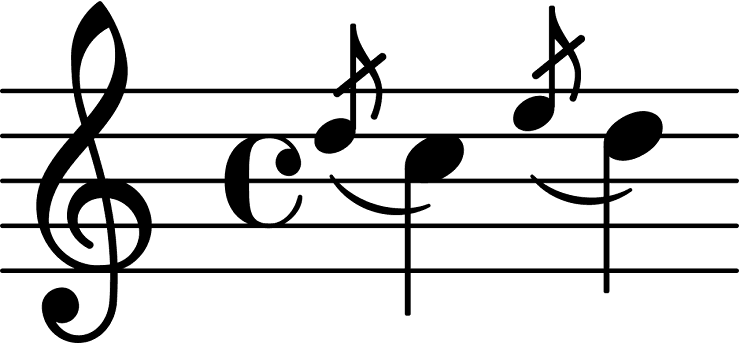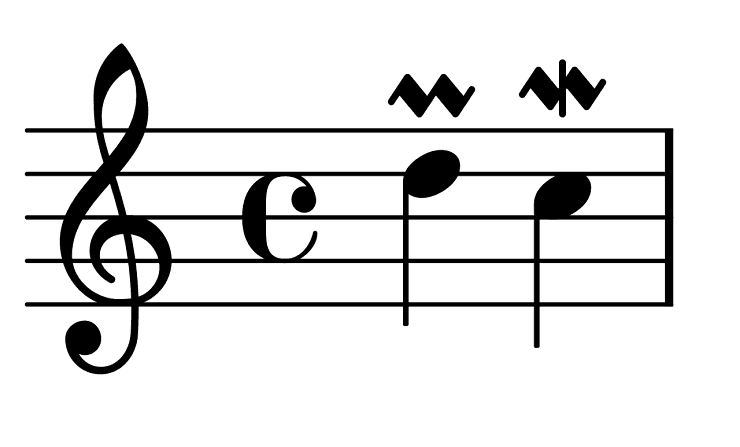Myths about teaching can hold you back
Learn why
Lesson 3 of 13
- Year 8
Why might we wish to decorate a melody?
These resources will be removed by end of Summer Term 2025.
Switch to our new teaching resources now - designed by teachers and leading subject experts, and tested in classrooms.
These resources were created for remote use during the pandemic and are not designed for classroom teaching.
Lesson details
Key learning points
- In this lesson, we will explore further melodies from Pachelbel's Canon in D. We will learn how performers of Baroque music vary and decorate their melodies, and then explore this practically.
Licence
This content is made available by Oak National Academy Limited and its partners and licensed under Oak’s terms & conditions (Collection 1), except where otherwise stated.
10 Questions
Q1.What does 'legato' mean?
What does 'legato' mean?
Playing something in a harsh way.
Playing something in a short and spiky way.
Q2.What does 'staccato' mean?
What does 'staccato' mean?
Playing something in a harsh way.
Playing something in a smooth way.
Q3.What are the two sharps in the key of D major?
What are the two sharps in the key of D major?
F# D#
F# E#
Q4.In a scale, what number note is the 'root' note?
In a scale, what number note is the 'root' note?
3
5
Q5.Which is the 5th scale degree in D major?
Which is the 5th scale degree in D major?
D
F#
Q6.What is a countermelody?
What is a countermelody?
A melody that is faster than the main melody.
The main idea in a piece of music.
Q7.What words did we use to describe the shape of melody 3?
What words did we use to describe the shape of melody 3?
Moves mainly by leap.
Moves mainly by step.
Q8.What words did we use to describe the direction of melody 3?
What words did we use to describe the direction of melody 3?
It is ascending
It is descending
Q9.How many beats does each note in melody 3 last?
How many beats does each note in melody 3 last?
2
3
Q10.How does the texture change when melody 3 is added to Canon in D?
How does the texture change when melody 3 is added to Canon in D?
It becomes monophonic.
It becomes more sparse.
10 Questions
Q1.What do we call melodic decorations in music?
What do we call melodic decorations in music?
Additions
Colour
Q2.Why do we decorate melodies in music?
Why do we decorate melodies in music?
To make them more difficult to play.
To make them more modern.
Q3.What is this ornament?
What is this ornament?

A grace note
A mordent
Q4.What is this ornament?
What is this ornament?

A mordent
A trill
Q5.How do you play this ornament?
How do you play this ornament?

You play it very short before another note.
You play the note above very quickly.
Q6.What is this ornament and how do you play it?
What is this ornament and how do you play it?

A grace note, you play it very quickly before another note.
A trill - you alternate between two notes very quickly.
Q7.What words did we use to describe the shape of melody 4?
What words did we use to describe the shape of melody 4?
Moves in equal steps and leaps
Moves mainly by leap, with some steps
Q8.What words did we use to describe the direction of melody 4?
What words did we use to describe the direction of melody 4?
It descends at the beginning, then mostly ascends.
It descends to the middle, then ascends again.
Q9.What rhythm does melody 4 use?
What rhythm does melody 4 use?
Swung rhythm
Syncopated rhythm
Q10.What are the note values used in melody 4?
What are the note values used in melody 4?
Crotchets, minims and dotted quavers.
Quavers, crotchets and dotted minims.

